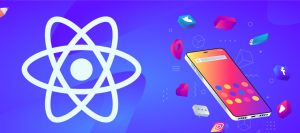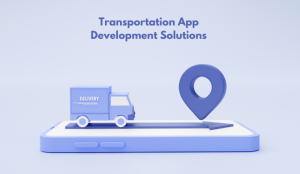Flutter vs Native: What is Best for Your Project?

Most businesses still prefer cross-platform applications since native apps for Android and iOS are very expensive to develop and maintain. There has been a rise in the number of industries using Flutter’s cross-platform network since 2018. This includes fintech, e-commerce, and retail.
Comparing Flutter to native development, both offer high scalability and enhanced user experience. However, there are significant differences in development speed, code maintenance, costs, app performance, and other criteria.
Mobile developers from Surf have handled native technologies for over nine years. They have also made significant steps in the development of cross-platform apps since 2018. To help you make the correct decision, here is a detailed analysis of Flutter vs native performance from Surf experts.
After going through this post, you will understand the business goals you can achieve using Flutter and native technologies.
What is Flutter?
A cross-platform network comprises of various tools that allow you to develop an app ideal for both Android and iOS. The main disadvantage of many cross-platform frameworks is slow animations and the uncertain behavior of interface elements.
Flutter is a famous cross-platform network with one code base and runs of Dart programming language. It was launched by Google in 2018 and has proved to be a super convenient toolkit for creating quality UI components and animations.
Flutter offers user-friendly interface elements and smooth animations despite being Google’s fresh work on cross-platform.
What Are Native Technologies?
Compared to cross-platform tools, the development of native applications is application-specific to either iOS or Android. Native applications are coded in languages only supported by the OS vendor of the device:
- Android: Android Studio, Java, and Kotlin
- iOS: Objective-C, Xcode, and Swift
Native applications don’t have serious drawbacks, and users can make the most of advanced features like GPS, an accelerometer, a camera, and more. They can also install native applications through popular app stores like App Store and Google Play.
A significant investment is needed to develop and support native applications because developers have to modify the interface, business logic, and presentation to each platform’s features. Therefore, low-cost Flutter is growing in popularity among hi-tech businesses as compared to native technologies.
Flutter Vs Native App: Speed of Development
Flutter grants developers the capacity to develop a single code for two different platforms. This plays a significant role in reducing the cost and time of development. Creating Flutter codes is much easier compared to the native ones. Amateur developers can also learn the basics of Flutter easily, so there is no need to hire professionals. It is different in native technologies, where developers have to create two codes for iOS and Android, which takes a lot of time.
Developing using Flutter is 20% to 50% faster compared to the development of native apps, according to Surf experts. The speed will also depend on the expected functions and the difficulty of the interface.
App Performance
Based on Surf’s team experience, the native app CPU usage is about 50% less compared to those developed by Flutter. React Native apps, on the other hand, use more CPU.
When it comes to memory use, native apps are the most efficient. Flutter uses double the memory costs compared to native. React Native shows worse performance.
Code Maintenance
Supporting a native app in most cases is time-consuming. You have to put in a lot of effort to maintain two codebases. You should also identify bugs and create different updates for each platform. The effort required in maintenance grows significantly with multiple OS-supported devices.
When it comes to maintaining a Flutter application, you will have a smooth time because there is just one codebase for two apps. This helps developers to detect issues fast, source external tools, and support third-party libraries. Flutter also has a Hot Reloading feature that helps to resolve the problems on the application quickly.
Kotlin Native Vs Flutter: Features and Integrations
Many native frameworks used in the development of iOS applications (including Swift) offer enhanced safety and quick integration options. It is the same for Java and Kotlin for Android.
Integrating unique features of third-party libraries of plugins is not that complicated with Flutter. Developers who are still unaware of Dart functionality might find this difficult. Flutter engine also has specific constraints for integrating native modules through Android Studio’s Xcode by default. The documentation of Flutter comprises manual commands to deal with any complications that may arise and integrate it for iOS and Android successfully.
Swift For IOS Vs Flutter: Features And Integrations
Swift is still one of the popular languages developed for iOS by Apple. Most developers use it for exceptional documentation and frameworks. When we compare Flutter vs Swift native, the combination with Swift iOS is much easier and requires less configuration. Swift may also have poor integration with specific third-party tools. For Flutter, its code is ideal for various platforms, including Android. It also grants you faster code writing, which makes it the perfect choice for MVPs.
App Developers Availability
The Flutter technology labor market is scarce, and most developers are new to the cross-platform framework. The primary reason for this is the lack of projects that require Flutter worldwide. Therefore, hiring a reliable team comprising of more than five Flutter developers might use up much of your time.
The professional expertise of a potential Flutter team might also bring up some questions. Studying Dart and writing a few samples is not enough to begin a full-scale project on Flutter. Qualified developers have to comprehend the obstacles of general mobile development and the feature of both iOS and Android platforms.
App Development Cost
Native app development is costly because you have to write two codes for different platforms with different functionalities. Native development also requires the hiring of more developers and additional professionals.
A typical native team will require:
- 3 iOS developers
- 1 to 2 QA engineers
- 3 Android developers
- 1 designer
A typical Flutter team will require:
- 1 designer
- 4 Flutter developers
- 1 QA engineer
From Surf’s team’s experience, using Flutter might save you 70.5% on QA considering the use of autotests, 45.6% on development, and 33.3% on application design. Projects might be different. In some instances, Flutter can save your budget by up to 15 % and up to 50% in other cases. It is therefore beneficial during the development stage. Time to market is minimized, and the standard team is smaller.
Use Cases for Flutter and Native Technologies
Your business goals largely defiance your choice between Flutter and native technologies. Flutter is mostly used by medium to large businesses. Examples include Airbnb, Alibaba, and Uber apps. Native technologies, on the other hand, are used to create modern niche apps with advanced features.
The following are use cases of Flutter and native technologies:
Flutter
- Apps with material design
- Advanced OS plugins with simple logic
- Apps with OS-level features
- MVP mobile apps
- Apps with Skia rendering engine
- Flexible UI with high-level widgets
- Reactive apps with big data integration
Native Technologies
- Advanced UI apps
- AR/VR apps
- AI-triggered apps with big data
- Gaming apps
- Heavy consumption apps
- GPS-centric apps
- Rich-animations apps
- IoT apps connecting with TVs and Wallets
- Travel based apps
- Standalone apps
When to Choose Native Technologies?
- Create niche MVP apps
- Create advanced native apps with seamless speeds and performance
- Develop high-performing apps with strong OS embedded connections between the app and device
- MVP mobile apps
- Reactive apps with big data integration
- Need for sophisticated features with to reliability and security
- Regular app updates based on the release of every new OS version.
When to Avoid Native Technologies?
- When you have high maintenance and updates costs
- Need to deploy the app to the market quickly
- Global device compatibility development and related issues
- App development without a high investment plan, with a less skilled team
- Development of a native app with minimal in-app payment options
When to Choose Flutter?
Surf development experts have handled large development projects on Flutter in Russia, including business mobile banking, major video streaming platform, pharmacy retail app, and KFC’s corporate mobile app. They recommend Flutter for different retail, franchisees, banks & fintech, and large organizations. The following are cases of Flutter application:
- Create native apps with modern cloud services
- Create a smooth design experience
- Build MVP with on-demand mobile features and reactive widgets
- Develop and single code with back-end and front-end functionalities
- Reach a broader target audience fast and reduce time-to-market
When to Avoid Flutter?
- For mobile apps with universally accepted MVVM, MVP, and MVC architectures.
- For native apps without functional limitations or UI.
- For mobile apps with a particular focus on native functionality and performance
- For brand-specific and feature-specific apps for a standalone business.
Flutter is ideal for the banking sector because it is safer compared to native apps, and its source codes are arranged into a native code, making it difficult for human comprehension. Flutter apps can also use the banking platform’s security technologies like Face ID, Touch ID, or a fingerprint scanner.
Conclusion
When it comes to Flutter vs Native technologies, Flutter is the best option if you are looking for fast development speeds and reduced costs. Native technologies are ideal for advanced niche applications with sophisticated features.
If you plan to develop an iOS or Android app with no serious losses in budget or quality, choose Flutter now.






